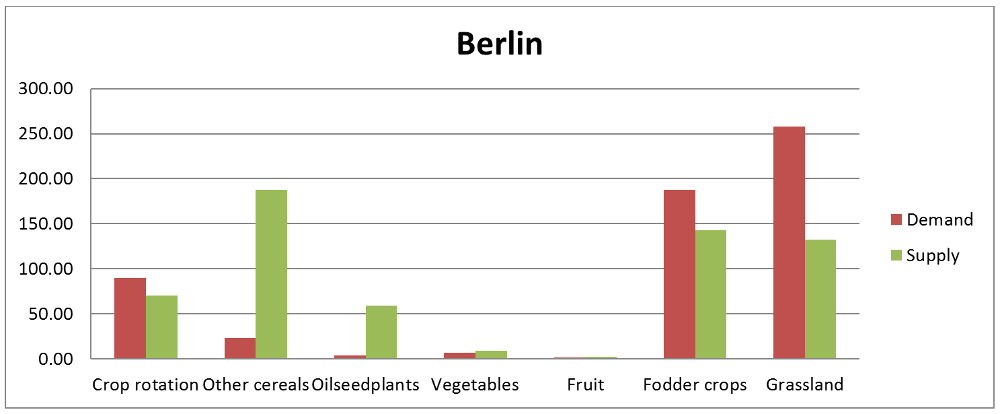Metropolitan Foodscape Planner Berlin City-Region
Though Berlin is not ‘handicapped’ by sea water as a limiting factor for regional food production, the surrounding landscape in the federal state of Brandenburg are largely protected by nature conservation and landscape policies. This reflects relatively well the overall situation in Germany: about 30% of the land is protected under landscape law (nature parks and landscape protection areas). In the figure below this is recognizable by the extensive designation with the grey colour: not available land for food production. However, as in the case for the urban fringe and the green buffer (like London about 13 km wide), existing grassland is considered as being available for not intensive, ecological dairy farming with low density of livestock (ca. 1 livestock unit per hectare).
Berlin still has a substantial amount of arable land incl. grasslands available in its direct urban periphery, namely a total of 65,000 ha. The metropolitan food production zone for plant-based products covers the area between 38 km and 53 km distance from the centre, providing a total of about 110,000 ha for food production. The livestock production zones reaches out to 80 km distance (indicating a production area of 450,000 ha) and the transition zones covers larger regions of Poland, requiring 1.5 million ha of land for plant- and livestock-based food production.

Figure below illustrates that for both fodder crops and grasslands, the surrounding areas of Berlin show a clear under-supply. Only for oil seed plants and other cereals, we find a clear surplus of regional production over actual demand.

